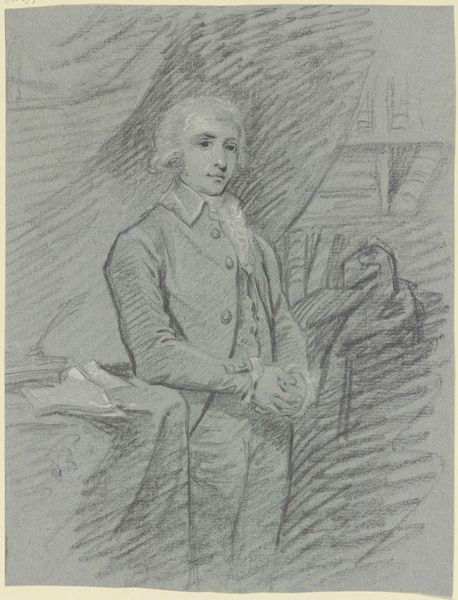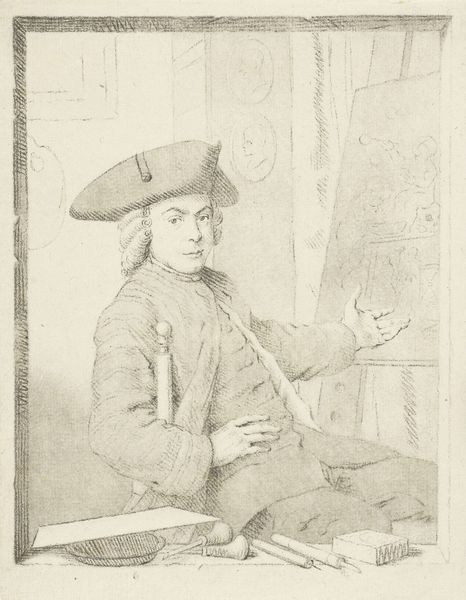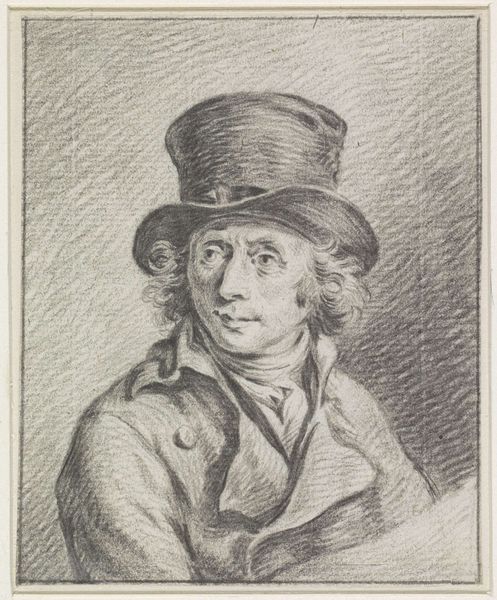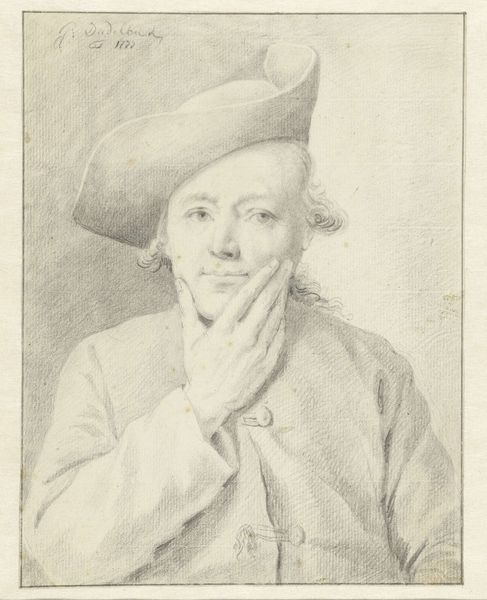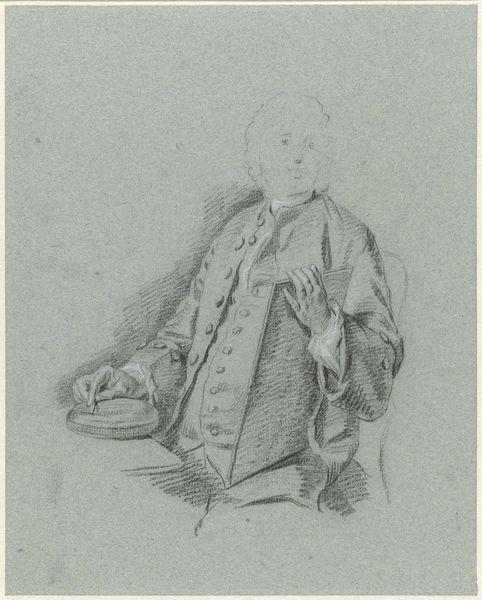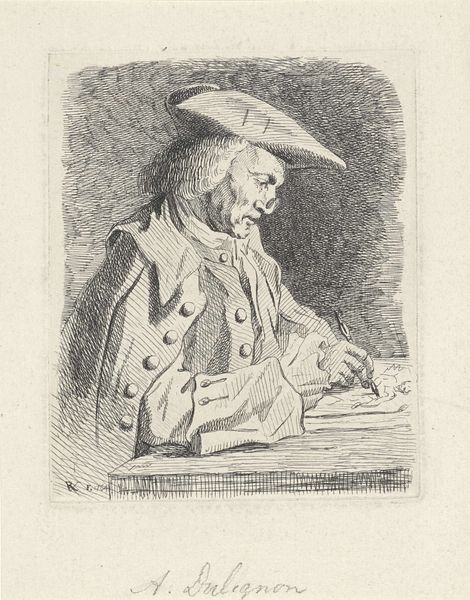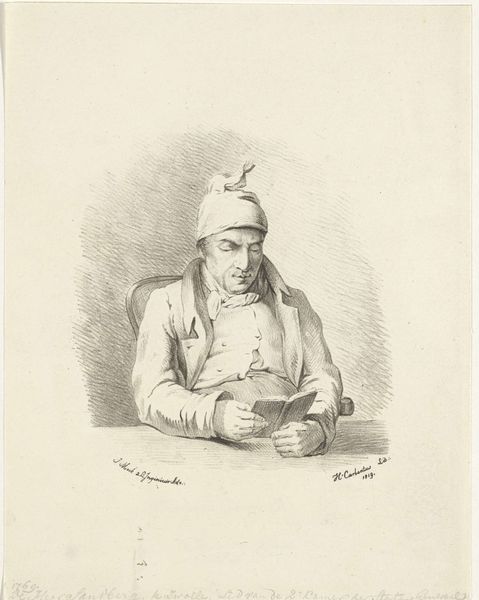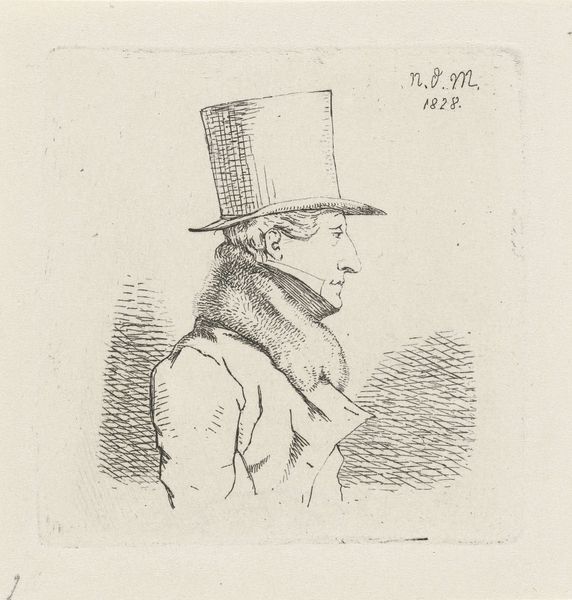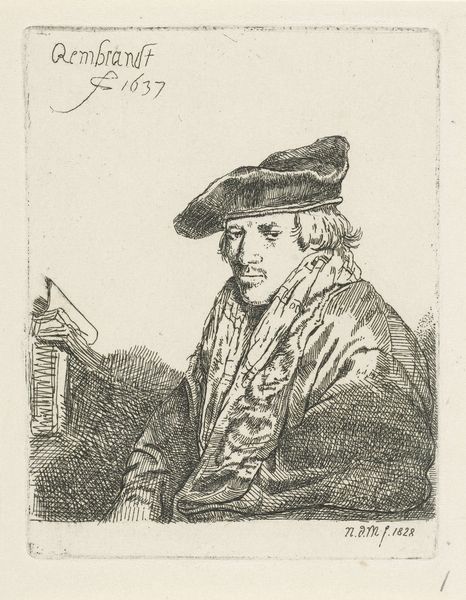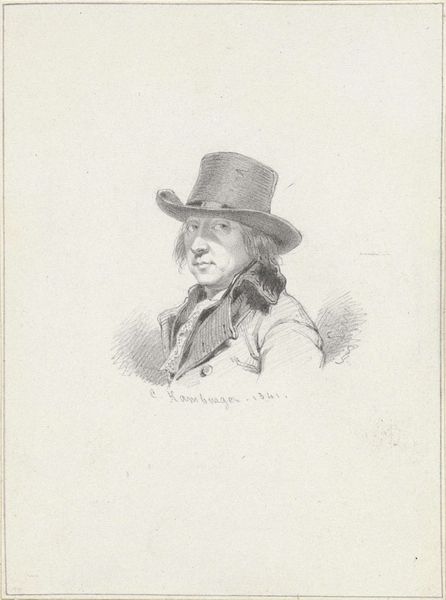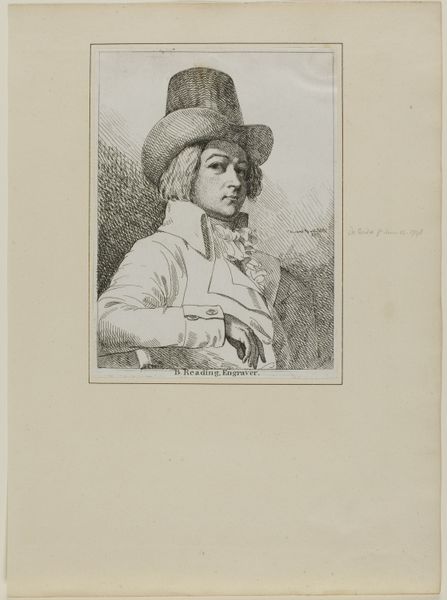
Dimensions: height 114 mm, width 88 mm
Copyright: Rijks Museum: Open Domain
Reinier Vinkeles created this small engraving of H.O. Arntzenius sometime in the late 18th or early 19th century. It's made using a process called "intaglio", where lines are incised into a metal plate, and then filled with ink to make a print. Look closely, and you can see the intricate network of etched lines that give the image its form and tonality. The relative fineness of the lines suggests that Vinkeles wasn't just proficient, but deeply skilled. The process would have required specialized tools, like burins and scrapers, and years of training to master. Engraving was a very reproducible medium, and so it was important to the Enlightenment project of disseminating knowledge. But it was also highly valued for its own aesthetic qualities. In this case, the engraving is not just a record but also a work of art in its own right. It demonstrates that skilled handwork always reflects the social and cultural values of its time.
Comments
No comments
Be the first to comment and join the conversation on the ultimate creative platform.
